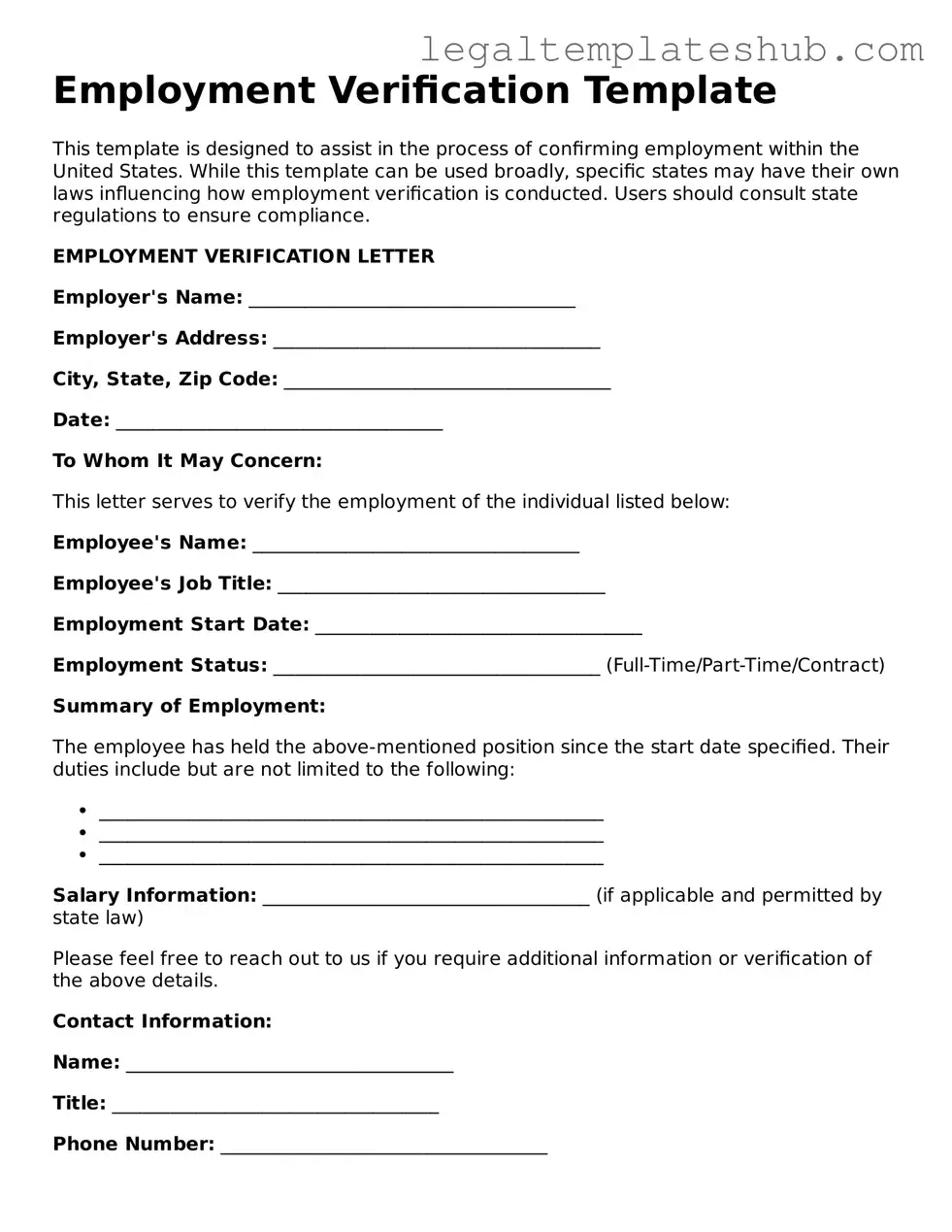Printable Employment Verification Template
The Employment Verification form is a crucial document used to confirm an individual's employment status and history. This form serves as a key tool for employers, lenders, and other organizations seeking to verify a person's job-related information. Understanding how to fill it out correctly is essential for ensuring accurate and efficient processing.
Ready to complete your Employment Verification form? Click the button below to get started!
Access Editor
